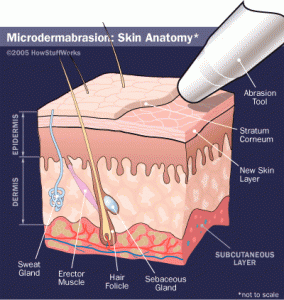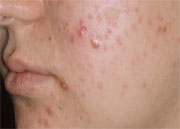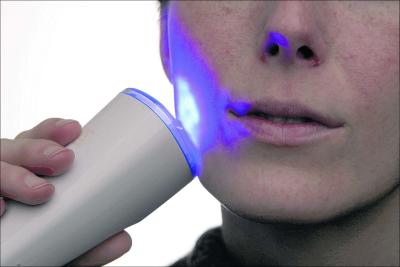The unsightly appearance of acne lesions or pimples isn’t the only potential problem with the disease, unfortunately. In some cases, it’s possible for acne to leave permanent scars.
Some conditions may appear to be scars that are not. Macules and other bumps can occur even after acne is treated. Redness may persist for up to a year. But these aren’t true scars. They’re not permanent.
True scars are a permanent change to skin tissue produced by the healing process itself, chiefly creating fibrous tissue. As white blood cells attack bacteria they can produce changes in underlying skin cells in the surrounding area. This is one way scars become permanent.
They may also not be limited to areas under the surface.
So-called icepick scars are small pinholes that form in the surface of the skin. They look as if the skin has been poked with an icepick, hence the name. They’re typically too deep to be treated with simple dermabrasion or even laser resurfacing.
Boxcar scars are similar, except they tend to be flatter on the bottom, rather than narrowing to a point like icepick scars. Since they’re often shallower they can sometimes be treated with resurfacing techniques.
Keloid scars are firm and grow beyond the site of the injury. They’re characterized by an excess production of collagen. They often result in a shiny pink or red scar.
Prevention is the best option, of course. But when that’s not possible, there are a number of standard treatments.
Dermabrasion to treat acne scars

Dermabrasion is used to treat a wide range of skin conditions, including mild to moderate acne scarring. A local anesthetic is given and the professional uses a high speed brush to remove layers of skin. The skin then naturally regenerates, minus the scar in many cases. When it’s not entirely removed, it’s often less obvious.
A variation on the technique is known as microdermabrasion. Instead of a high speed brush, aluminum oxide crystals are moved rapidly through a type of vacuum hose. They carry away skin cells on their way to being collected. It’s less invasive or traumatic to the skin, but the results may, therefore, be less.
Lasers to treat acne scars
Laser treatment can be effective for some patients. Used well, they can change the contour and size of scars. CO2 lasers are often used to remove some tissue. Sometimes a single treatment is enough, but redness can persist for several weeks afterward. Lasers work in these types of treatment, essentially, by burning.
Surgery to treat acne scars
A technique called ‘punching’ can be used to remove some icepick scars. The scar is excised down to subcutaneous fat and the resulting hole repaired. The repair may be done with sutures or a small skin graft.
Subcisions may be performed. These involve actually lifting the scar tissue away from unscarred skin. Results are mixed, but the technique can be effective.
Drugs to treat acne scars
Keloids don’t respond well to these mechanical techniques, since altering the skin often just provokes the formation of more keloids. Sometimes a topical retinoid is applied. In other cases steroid-type drugs are injected directly into the skin around the scar. They’re difficult to treat by any means and results vary widely from person to person.
Whatever treatment method you seek, it’s important to consult a professional for proper diagnosis. That’s the best way to find out about all the available alternatives, and their potential risks and benefits.




